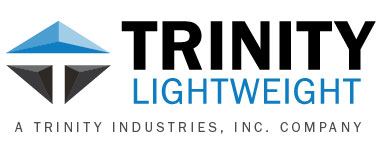
ARCOSA Lightweight
Suite 500
Arlington, TX 76011
Phone: 346-225-0266
346-225-0266







ARCOSA Lightweight is the largest producer of rotary kiln expanded shale and clay lightweight aggregate in North America, with production facilities in California, Colorado, Texas, Alabama, Arkansas, California, Colorado, Indiana, Kentucky and Louisiana. ARCOSA Lightweight is a leading supporter of research, independent testing and field studies to improve the manufacturing process and expand the beneficial uses of the product. ARCOSA, Inc. is a diversified industrial company that owns market-leading businesses providing products and services to the energy, transportation, and construction sectors.
ARCOSA Lightweight produces and distributes rotary-kiln expanded shale and clay lightweight aggregates made from natural shale and clay. This building material offers excellent results in both quality and performance in a variety of engineering and horticultural projects. Product applications include highway and road surfaces, concrete bridge decks, high-rise buildings, concrete products, geotechnical applications; and for horticultural projects as a soil amendment or conditioner.
What is Internal Curing?
In the past, curing concrete was a process done using water from the outside in. But today, expanded shale and clay is used as a substitute for normal-weight aggregates to provide a source of moisture for internal curing that promotes more complete hydration of various cementitious materials.
Internal Curing is a practical way of supplying additional curing water throughout the concrete mixture. This is done by using water absorbed in expanded shale or clay lightweight aggregate, which replaces some of the conventional aggregate in the mixture. Internal Curing is often referred to as “curing concrete from the inside out.” Due to the inherently low permeability of the surrounding environment, internal curing is particularly beneficial in concrete with a low-water-cementitious material ratio (w/cm) where external curing has little effect on hydration in the internal portion of the concrete. With an emphasis on durability, and with the trend to high performance concrete, internal curing is needed to reduce both autogenous shrinkage and cracking.
The American Concrete Institute defines internal curing as “supplying water throughout a freshly placed cementitious mixture using reservoirs, via pre-wetted lightweight aggregates, that readily release water as needed for hydration or to replace moisture lost through evaporation or self-desiccation” While internal curing occurs in conventional lightweight concrete, it is only recently that internal curing has been intentionally incorporated into normal weight concrete to improve its properties.
For more information, or to schedule a Lunch & Learn session, contact:
Don Vernon
Cell: 346-225-0266 or via email: donald.vernon@arcosa.com
Services
Special Services
Firm Types
Construction Products







